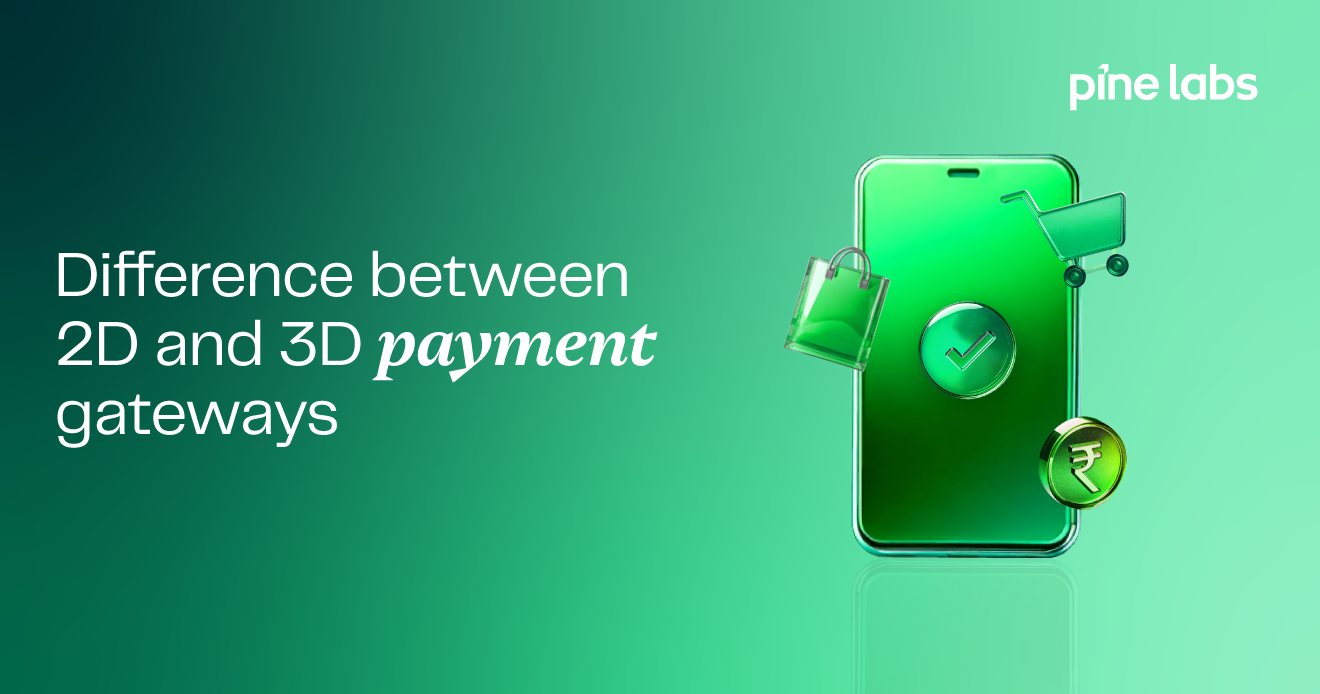Choosing the right payment gateway can shape how smoothly your business handles online and international transactions. A 2D payment gateway is a simple online payment system that processes transactions using basic card details—card number, expiry date, and CVV—without extra verification like an OTP.
This quick, frictionless flow can be useful, especially for businesses dealing with global customers where added layers might slow things down.
But is it secure enough? In this blog, we’ll break down the difference between 2D and 3D gateway systems. Look at real-world examples, and understand which type of payment gateway for international payment makes sense for your business.
What is a 2D Payment Gateway?
In some parts of the world, customers can complete a card payment online without going through an OTP or extra security prompt. A 2D payment gateway allows this—just entering the card number, expiry date, and CVV is enough. It’s typically used in regions where two-factor authentication isn’t a legal requirement, like the US, Southeast Asia, and parts of Latin America.
Because of its simplicity, a 2D payment gateway offers a much faster and smoother checkout experience. This can be especially useful for international payments where additional security layers may slow things down. It’s commonly used for recurring payments, one-click checkouts, and low-risk sectors like SaaS, gaming, and digital subscriptions.
That said, 2D gateways must still follow strict security standards like PCI-DSS to protect sensitive card information. While the lack of extra verification can boost conversions, it also means businesses need to be more vigilant about fraud prevention.
Difference Between 2D and 3D Payment Gateways
When it comes to processing digital transactions, the choice between a 2D payment gateway and a 3D payment gateway can significantly impact both customer experience and security. Here’s how they differ across key features:
| Feature | 2D Payment Gateway | 3D Payment Gateway |
|---|---|---|
| Authentication | No OTP or PIN—just card number, expiry, and CVV | Requires an OTP, PIN, or biometric for added verification |
| Security | Basic security, more exposed to fraud | Stronger fraud protection with two-factor authentication |
| User Experience | Faster and smoother, fewer steps | Slightly slower due to an extra authentication step |
| Use Cases | Recurring billing, international payments, and digital subscriptions | Domestic transactions, one-time purchases, and high-risk industries |
| Compliance | Used in regions where 3D Secure isn’t mandatory (e.g., US, SEA) | Compliant with RBI guidelines, PSD2 in the EU, and global 3DS regulations |
3D Secure (3DS) adds a layer of protection by verifying the cardholder through systems like Visa Secure or Mastercard Identity Check. While this step increases safety, it may slow the process slightly.
Payment providers like Pine Labs, Razorpay, and PayU offer both 2D and 3D options, letting businesses adjust based on region, compliance, and the level of risk they’re comfortable with.
Pros & Cons of 2D Payment Gateways
Like most technology choices, 2D payment gateways come with both advantages and trade-offs. Here’s a closer look at where they shine and where they might fall short:
Pros:
- Without OTPs or extra steps, transactions complete quickly, which helps reduce cart abandonment and improve customer satisfaction.
- In countries like the USA, Southeast Asia, and Latin America, where 3D Secure isn’t enforced, 2D gateways offer a smoother path to payment.
- For subscriptions or small purchases, 2D gateways reduce friction and support a consistent payment flow.
- Fewer barriers at checkout make it easier for international users to complete their transactions without hassle.
Cons:
- The lack of two-factor authentication means greater vulnerability to unauthorised card use.
- Countries like India require 3D Secure for domestic payments, so 2D gateways can’t be used locally.
- Under the PSD2 directive, 2D gateways often don’t meet Strong Customer Authentication (SCA) rules, limiting their use in the EU.
How to Choose the Right Payment Gateway for Your Business
Not every payment gateway fits every business. Choosing the right one depends on how and where you sell.
Start by looking at your business model. Subscriptions often benefit from 2D gateways, while one-time purchases, especially in high-risk categories, are better suited to 3D Secure.
Your provider must meet PCI-DSS standards for data security. If you operate in the EU or UK, your gateway also needs to support Strong Customer Authentication (SCA) under PSD2. In markets like India, 3DS compliance is non-negotiable.
It’s also worth checking how easy it is to integrate the gateway with your systems—some offer better developer tools and APIs than others. Don’t forget to review failure rates, customer support quality, and promised uptime.
Many businesses now use a hybrid approach, combining 2D gateways for smoother subscription billing and 3D ones for extra security on single purchases.
The right setup depends on your products, your customers, and the level of risk you’re willing to manage.
Conclusion
Knowing the difference between 2D and 3D gateway options can help you choose what fits best with how your business runs. A 2D gateway is usually chosen when fast checkout is a priority—like with repeat billing or international payments—because it skips added steps such as OTP verification. This can help reduce drop-offs at checkout. But without that extra verification, there’s less protection built into the process.
3D gateways, by comparison, add that extra layer. Requiring something like an OTP or PIN, they’re often preferred for domestic transactions or higher-risk payments, where fraud protection is a bigger concern.
Not every business needs the same setup. Some choose to combine both approaches—using a simpler flow for returning customers and adding extra security checks when handling larger or one-time transactions.
Platforms such as Pine Labs Online make this balance easier to manage. Our system supports both types of flows and offers flexibility in how payments are handled, without adding unnecessary friction.
Looking for a secure and flexible payment gateway solution? Talk to our experts today.

